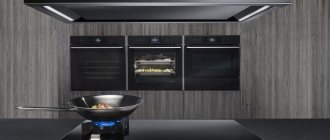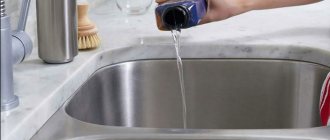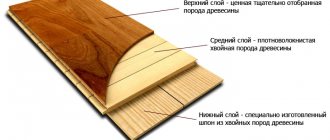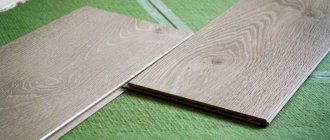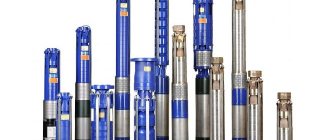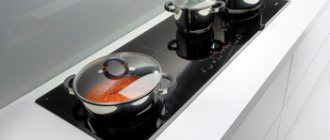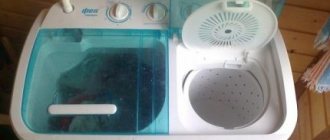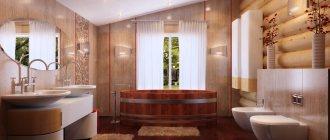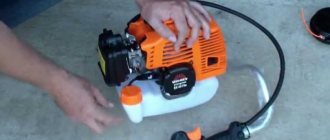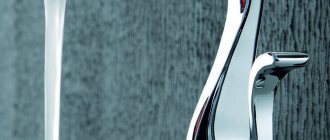There are two short periods in the year when apartment owners truly envy the owners of private houses: the transition of summer to winter and winter to summer. This is when the central heating is not yet on or has already been turned off. Private owners solve the problem simply: turn on the “warm floor” or boiler and forget about the cold night outside. But owners of living space in high-rise buildings have to buy additional electrical appliances for heating. There are several types of them: they differ in type and principle of operation. What to choose is a big question that many consumers are not well versed in.
The editors of the StroyGuru website decided to help. To do this, I have prepared a series of articles about different types of heaters. We decided to start with quartz devices. The reason is the emergence of a new generation quartz heater: it uses carbon instead of tungsten filament. The new product deserves the closest attention - according to experts, it is the future.
What is a quartz heater
In life, sometimes there are cases when completely different objects or devices are hidden under one name. This is also observed when using the term “quartz heater”. Here two devices are combined in terms of design, basic rules of installation and operation, completely different from each other. They have only one thing in common - the method of heat transfer: infrared radiation. But even here there are some differences: wavelength, surface temperature and the presence of an additional method of heating the room in one of the devices: convection.
The presence of the definition “quartz” in the name was obtained according to different evaluation criteria. In one case, the adjective “quartz” came into its name because of the transparent quartz tubes in which a spiral of wire is placed (such heaters are sometimes called reflectors) emitting infrared rays. The remaining elements of the device are designed for mounting it on a wall or ceiling and reflecting, after focusing, IR waves in a given direction.
In the second, a monolithic panel is made of quartz, performing two functions at once:
- accumulates heat (heats up), which allows you to maintain a comfortable temperature for a long time when the device is turned off;
- transmits infrared rays that heat the hard surfaces in the room, and through them the entire room.
The presence of different “origins” in the name of the heater requires separate consideration of each type of heating device.
Infrared heaters
In Europe, the most popular are UFO heaters, which in Russia are known as infrared quartz heaters. Their features are light weight, mobility, the ability to be placed on walls and ceilings, and low energy consumption.
Structure. An infrared heater made of quartz sand consists of filaments made of tungsten, nichrome, and, more recently, carbon, enclosed in flasks made of quartz (SiO2 - silicon dioxide). The tubes can be filled with inert gas (mostly inert gas) or quartz sand, depending on the type of heating element.
All this is placed in a steel case with a reflector (the structure of the heater can be seen in detail in the photo below). Brackets are screwed or soldered on the back wall, allowing you to hang the device on the wall or ceiling anywhere. The main thing here is to be able to connect to the power supply (there is an outlet nearby or an extension cord is on hand).
Principle of operation. All types of quartz heaters use the ability of quartz to transmit infrared rays. Therefore, a wire made of tungsten or nichrome (spiral) is placed inside a quartz tube, and, more recently, a wire made of carbon (strip) - in the open air, the spirals quickly burn out.
When heated to a certain temperature, the wire insert begins to induce a magnetic field (about 2% of the energy is lost to it) and emit heat waves in the infrared spectrum (can be of different lengths, depending on the heating temperature). Here physicists can reproach that the essence of the device’s operation is not entirely accurately stated. The answer is simple: there is no point in delving into the jungle of theory - a site visitor should only have an idea of the principles of operation of the device.
IR waves are emitted evenly by the heated element of the tube in all directions. However, what is the point of heating a wall or ceiling? Therefore, a reflector in the form of a concave mirror is placed behind the spirals, redirecting the wave flow towards the room with a small dispersion angle (this is how the focus of the mirror is calculated).
A feature of such devices is the transfer of heat not by air, as, for example, in oil radiators, but by waves. Heating occurs similarly to the sun's rays: the floor, furniture, sections of the wall, and other objects heat up in the radiation zone. As a result, the efficiency of the device itself is about 87-95% (not to be confused with the efficiency of converting electrical energy into heat, where 98%) due to the fact that the ceiling and ceiling space are not heated in vain.
The device operates according to the following algorithm:
- after switching on, the coil becomes hot;
- infrared radiation is directed in one direction: in front of the device (this is helped by a reflector at the back of the bulb);
- all objects within the reach of IR rays heat up;
- the air, in turn, warms up from the irradiated floors, walls, furniture, and various objects;
- when the set temperature in the room is reached, the thermostat turns off the device;
- When the temperature drops, the heater turns on again.
The operating principle of a quartz IR heater.
The advantages of IR heaters are clearly shown by the diagram below for heating a room using a central heating radiator and a wall-mounted IR device. As you can see, to obtain comfortable conditions for a person to stay in a room, you need to strongly warm the ceiling and ceiling space. And this means a decrease in the efficiency of the heating system.
Scheme of convective and infrared heating of a room.
A huge plus is that there are no convection heat flows of air, and, consequently, dust and the smallest living organisms. The downside is that nothing will heat up behind the barrier. There are other pros and cons of quartz heaters of this family, which we will consider in more detail below.
Monolithic
A distinctive feature of monolithic quartz heaters is the combination of two types of heating: convection and infrared. This possibility is due to the structure of the device.
Structure. The device consists of a heating element hermetically sealed in a quartz plate, a metal case (not always) and a reflective screen (attached to the wall behind the panel, not included in the package, but purchased separately). The design is simple, non-separable. The tightness ensures that the spiral operates without access to air, and with it oxygen.
The latter is the enemy of the spiral. It begins to oxidize, as a result of which it quickly burns out. Therefore, it is very important to handle this type of heater with care. After all, the slightest damage to the fragile quartz case shortens the life of the device. In theory, without access to oxygen, the heating element can operate indefinitely.
The disadvantage is the lack of a thermostat. Manufacturers do not deliberately install it - it will read the temperature of the case, but they provide the possibility of connecting it upon purchase. This point is reflected in the instructions - it describes in detail how to make the connection. The presence of built-in climate control allows you to get an economical heating device.
Principle of operation. Monolithic quartz heaters are based on two ideas: using IR rays to heat the room and the desire to maintain a comfortable temperature in the room for a long time after switching off. The result is a device that uses two heating methods: wave and convection.
The device operates as follows:
- after switching on, the coil quickly heats up and begins to emit infrared waves;
- passing through quartz, the rays give off part of the energy to the panel, causing it to heat up;
- walls, ceiling, floor and furniture begin to slowly warm up;
- after about 20 minutes, the stove reaches a temperature of +95oC, after which it begins to heat the air around it;
- warm air currents begin to rise upward (a quartz radiator is obtained). The convection heating method begins to work;
- after heating the panel, infrared radiation passes through the quartz plates with virtually no loss of power - the laws of physics do not allow the wall material to be heated above +95oC;
- all surfaces within the reach of IR waves heat up;
- the air, in turn, warms up from the warm floor, walls, furniture, and various objects;
- After turning off the device, it cools down for a long time, working like a central heating radiator.
Classification of quartz aggregates
A quartz heater is a practical modern device for arranging alternative heating, which contains elements of quartz sand. It can serve as both main and auxiliary heating equipment.
To function correctly, it is connected to the electrical network and creates comfortable heat by passing current through a high-resistance element. Demonstrates an impressive level of efficiency and does not burn oxygen.
Progressive models of quartz heaters have a convenient thermostat. It allows you to control heating and allows owners to set the most acceptable temperature for themselves.
It works on a resistive principle and is considered the safest for users, since it does not generate a magnetic field and does not heat metal accessories on the clothes of a person who comes too close to the unit.
It uses electricity wisely and makes it possible to save on utility bills without compromising your own comfort.
Manufacturers of heating equipment today offer two types of quartz units: infrared and monolithic (MKTEN). Both devices cope excellently with their tasks and have their own positive qualities.
The choice remains with the clients and depends on financial capabilities and the future intended use of the equipment.
Carbon-quartz heater
The innovative carbon-quartz heater that went on sale is similar in structure and operating principle to a monolithic panel. The difference is in the heating element - it is made of carbon fiber. A special feature of this material is its unlimited operating time even with a cracked case - oxidation processes leading to burnout of carbon fibers proceed several orders of magnitude slower than with metal wire.
Characteristics. The technical characteristics of each heating device are individual. Therefore, we present average data for all types of heaters, and we will show individual data when considering a specific model in the “Model Rating” section:
- power - 0.4-5.0 kW;
- efficiency factor (efficiency) - more than 90%;
- weight - 1.55-25.0 kg;
- heating area - 8-45 m2;
- filament temperature - 250-1200oC;
- class of protection against electric shock - 1;
- housing protection class - IP 20;
- dimensions: length - 480-1450 mm; height - 45-535 mm; thickness - 25-275 mm.
Kinds
The price of this floor heater is about $10.
As we have already said, there are two types - infrared and quartz. The first are the simplest heating devices with a luminous glass tube that emits heat (sometimes there are two or even three tubes). They are divided into wall and floor, horizontal and vertical. The devices are intended for indoor use and cannot be used outdoors. Prices for quartz heaters of this type start from 600 rubles for a model with a power of 800 W.
Quartz monolithic heaters heat by convection - they heat the air that circulates throughout the room, slowly warming up the entire volume. These devices are manufactured in the form of modules ready for installation and operation, so their installation and further use do not cause any special problems. The equipment can be called extremely unpretentious and extremely economical.
You can buy an infrared quartz heater in many specialized stores and supermarkets. As for monolithic models, they are sold only at some dealers - they are rarely found on general sale, but their popularity is slowly growing.
Pros and cons of a quartz heater
Quartz heaters have many strengths :
- reasonable cost - the device is accessible to almost any wallet: prices range from 518 rubles. up to RUB 48,900;
- high efficiency of electricity use. Manufacturers claim 99%. Anyone who knows physics well will agree. In practice, 95-98%, because part of the electrical energy is spent on the resistance of the supply wiring (the higher the power of the device, the more it heats up), on magnetic induction and visible light waves;
- reliability - a simple design allows you to operate the device without repairs for the entire allotted service life. The failure rate of heaters is minimal and is due to manufacturing defects, which we will discuss below (if they fail, it is easier to buy a new one than to repair the old one);
- compactness - do not take up much space;
- mobility - the heater can be moved from one room to another without any problems. For example, first warm up the nursery and then the bedroom;
- quick heating of the room;
- no human presence required during operation;
- simple yet safe operation.
A complete list of the advantages of this type of heating devices is given. However, in many sources (popular articles, manuals and manufacturer’s instructions), the pros and cons of quartz heaters are greatly distorted. Advertising moves include the following statements:
- durability. What is meant by this is not clear. After all, there is no basis for comparison. The author was unable to find the specific service life of the device (most manufacturers issue a 5-year warranty, official websites claim 20-30 years), which can be believed when there are specific statistics. If readers have data obtained during operation of the device, please share it in the comments;
- oxygen is not burned. And this marketing ploy is designed for people who have forgotten their school lessons in chemistry and physics - when heating spirals, threads and plates, oxygen is not involved: it is needed for the chemical reaction of the combustion process;
- no noise during operation. Another advertising ploy is that only the fan can make noise. The devices themselves, regardless of type and type, cannot emit sound waves. Sometimes a slight crackling sound is heard - the IR devices are at fault;
- infrared radiation (related to heat rays) kills germs - complete nonsense. Disinfection of the room and objects in it is carried out with ultraviolet rays, not heat;
- the use of quartz heaters does not dry the air in the room, which is completely untrue - any heating device dries the air;
- the absence of odors is another, albeit unsuccessful, move by marketers. There are odors and they are associated with the burning of dust on the flasks of the heaters if it is not wiped off in advance, which is, in principle, unrealistic - do not remove the protective grille every day to wipe the flasks;
- infrared rays are safe for humans, while forgetting about the microwave in which the chicken is fried. True, here the harm to humans is minimal, due to the low level of radiation - the main flow of rays is absorbed by clothing. But doctors do not recommend walking around the room with a working quartz heater in a semi-naked state - the skin will “cook” in places facing the source of infrared rays. This happens according to the following algorithm: the body heats up and quickly releases moisture. The body is not able to restore the water balance of the irradiated surface at the same speed. The result is burns. There are many reviews about this effect on various forums. By the way, this is why the portal team does not recommend visiting infrared saunas.
Among the disadvantages it should be noted:
- fragility. This problem can be encountered already at the stage of transporting the device from the retail chain to home - you are afraid of impacts, direct or received as a result of a fall. The performance will remain the same - only a network of small cracks will appear, but the service life will be sharply reduced;
- high surface temperature - installation of special screens in the form of a lattice is required to prevent children and pets from direct contact with the heated surface;
- lack of a thermostat - you will have to constantly turn the device on and off. If you wish, you can buy a thermostat yourself, but you will have to install it yourself.
Characteristics
A quartz heater from is a device with energy-saving characteristics. The devices fall into the category of being economical in terms of cost and compact in size. Moreover, the unit can be used in a variety of areas and for different purposes, as it is universal.
As for the technical characteristics of an electric quartz heater, these include the following indicators:
- power equal to 400 watts;
- daily power consumption is only 3.5 kilowatts;
- the device weighs 12 kilograms;
- has a “hot brick” effect.
The heater is wall-mounted, so it saves space. Most often, it is chosen by owners of small houses and apartments, as well as those who want the heating device to look minimalist and concise, not attract too much attention and not have too bright a color.
Which one is better to choose and in what case
The presence of two heating devices with different structures makes it difficult to choose. Experts advise in this case to adhere to the following recommendations:
- Panels are better suited for constant heating of small rooms. But in this case, a thermostat is required. In its absence, the owners will face two surprises: high energy consumption and a home sauna when it gets warm outside;
- The room warms up faster with reflectors. Therefore, it is better to buy UFO heaters for the dacha in the autumn-winter season;
- open and semi-open spaces (veranda, gazebo) will be heated only by infrared devices;
- if you need to heat several rooms in an apartment or house with one device, infrared heaters are better suited - they are more mobile;
- you can quickly warm up a room or wall (instead of a heat gun) only using the wave method (“Ballu” BIH-LM-1.5);
- Regardless of what the manufacturer says, quartz heaters can only be used effectively in small rooms (up to 8 m2). Large rooms require a cascade, which means significant energy costs;
- with poorly insulated ceilings, the quartz panel will heat the sky;
- one device is not able to create a comfortable temperature in a country house, house or apartment when the frost is more than 5oC. Here you need either several units, or other types of heating to help;
- Before purchasing, you need to determine the power of the heater. Weak appliances will not heat, and powerful ones will constantly create a stuffy atmosphere;
- Having chosen a powerful unit, be sure to check the characteristics of the electrical wiring in the house or apartment. There is a high probability of failure of the entire system or blocking of the heater by control equipment;
- If you have limited finances, it is better to buy products from domestic manufacturers - they are cheaper. But you should remember about the huge number of fakes with poor quality - Chinese manufacturers are especially guilty;
- carbon heaters are superior to analogues with other heating elements only in service life. Here you need to make a choice: pay a lot of money and look at the heating battery for about half a century (you might get tired of it), or get by with relatively little money and replace the device when the family gets tired of it.
Design of monolithic heaters
Monolithic heater design
The design of quartz heating panels is simple.
The device includes:
- heating element - nichrome insulated wire with resistance adjusted to the required power;
- a panel made of a mixture of quartz sand and kaolin white clay, in which the heating element is embedded;
- metal frame-case to protect the panel from damage;
- stand for floor mounting or brackets for wall mounting;
- power cord with plug.
Some models have a built-in temperature controller; for others, the device is purchased for an additional fee.
Recommendations for use
Like any electrical device, quartz heaters require strict adherence to operating rules. Let's remember the main ones:
- Before connecting to the outlet, the wiring is inspected. There should be no damage to it;
- turn on and let the device heat up well (the very first turn on) - in production, even with well-known brands, it is not always possible to dry the device well. If this is not done in a timely manner, the reflector may smell unpleasant for a long time, and the panel may experience electric shock or crack;
- You can dry things only with special racks. In their absence, there is a high risk of fire;
- Monolithic batteries must be handled with care - the slab is fragile: any drops or slight impacts can lead to cracking of the quartz;
- do not use equipment with long and medium-length infrared waves in children's rooms (such a wave is emitted when the coil is heated above 400oC);
- If there are small children and pets, install protective screens.
Special grid for drying things.
Brand information
has existed on the Russian market for several years. During this short time, she has already managed to win the trust of consumers and a good reputation. Users of the brand's products recommend purchasing the products to their friends.
The priority areas of activity of the brand are the production and sale of energy-efficient heaters of the new generation.
Production is organized taking into account the latest scientific and technological developments. The entire process fully complies with Russian and international standards, and only professional and experienced employees are involved in the company’s work.
At TeplEko you can purchase not only single goods (which is important for individuals), but also order large wholesale quantities, which is beneficial for individual entrepreneurs and legal entities. All units received by customers are supplied from the official warehouse, which is located in St. Petersburg.
At the same time, you can purchase a heater both online (paying for the purchase by bank transfer) and in a real store. Experienced company employees will advise you on all issues of interest and help you make a choice.
Today, certified stores, as well as 2 warehouses, are successfully operating on the territory of the Russian Federation. Several of them are located in the central part of our country, and the rest are dispersed throughout the territory. The total number of consumers of these products exceeds 50,000 people.
Flaws
Despite the fact that devices from TeplEco have a large number of advantages, some of their disadvantages can also be identified.
Energy efficient heaters do not have a temperature control system . If you want to have this option, you will have to separately purchase and install a thermostat. In addition, the quartz heater is heavy and can heat up on the surface.
But the advantages of the unit significantly exceed its disadvantages.
Therefore, if you want to purchase an inexpensive device that will perform its heating functions better than any other unit, then you should take a closer look at the product.
Top 5. WarmHoff Premium
Rating (2021): 4.58
Original design Heater in a non-standard form factor and with the ability to apply different texture patterns.
- Characteristics
Average price: 2,900 rub.
- Country Russia
- Rated power (kW): 0.6
- Maximum surface temperature: 96⁰
- Heating speed: 90⁰ in 20 minutes
- Volume of heated space (cub.m): 20
- Dimensions (mm): 650×350
- Weight (kg): 12
The brand name WarmHoff is misleading to many. In fact, this is a purely Russian product, albeit produced using German technologies and German equipment. The first thing that catches your eye when looking at devices from this brand is the original form factor. If you are tired of simple rectangular shapes, then this heater will surely please you with its rounded lines and elegant shapes. There are also simple models in the catalog, and at the most attractive prices. WarmHoff products are one of the cheapest on the market. Like everything, it has its pros and cons, and numerous customer reviews help to form an impression of the quality of the product. This is a fairly powerful monolithic heater, consuming 600 watts. With such energy consumption, the heating rate and heat transfer are quite low. According to the documents, the device is designed for 20 meters of area, but in reality the value is much less. In addition, not every dacha has wiring that can withstand such voltage for a long time. But as an additional heater in the off-season, it is an excellent option, and also looks as attractive as possible.
Advantages and disadvantages
- Original design
- Stand included
- There are big discounts on buying a set
- Inflated parameters
- High power consumption
Video
This is the first stage of coating, the second after 10 minutes of drying. In principle, you don’t have to do it, everything is decided by visual inspection using a magnifying glass. The nichrome coils should not be visible.
Almost finished heating element (just left to dry), length 15 mm, diameter 2 mm. Optimal supply voltage 12 V, power 8 W. Drying - on a hot heating battery, the next day connected to the power supply, applied voltage sufficient to heat up to 50 degrees (monitored with a multimeter in temperature measurement mode) - let it cool and warmed up to 100 degrees, then up to 150. Can be installed locally, operational tests the next day.
Application area
To solve the problem of heating private or industrial buildings, a quartz heater is used. And also such equipment is widely used in production for quick drying of painted surfaces.
The scope of application of quartz equipment is quite large. Let's consider more popular options:
- Application in hospitals and other medical institutions;
- For heating cafes, stadiums and other open areas;
- In wood drying or paintwork industries;
- For heating residential premises.
Quartz electric heaters are most popular in medical institutions, since the heat that is emitted has a beneficial effect on people's health.
Requirements for a homemade device
Most of those who want to try their hand at making a heater themselves are unlikely to strive for too difficult a job.
And the purchase of a large number of different technical elements and components, whose cost is quite comparable to the price of the finished product, is hardly economically justified. Thus, the future device should be:
- easy to install;
- productive;
- economical in energy consumption;
- safe;
- profitable, that is, the costs of its production should be minimal;
- convenient;
- compact.
Considering existing heaters produced by industry, we can conclude that all these requirements are met by devices operating on the principle of infrared radiation. More precisely, the so-called thermal films. The material generates thermal energy that is transferred to objects, which, in turn, heat the environment. This heating method is considered the most effective, since the generated heat is not wasted. Accordingly, the efficiency of such a device is very high.
Review Reviews
If you believe real reviews from buyers of heaters from, these devices have many useful qualities. They fully meet the expectations of owners due to their high quality and efficiency.
The main advantages include a fairly budget price. Thanks to this characteristic, TeplEco branded heaters can be purchased by representatives of almost all social strata. Another positive feature that consumers highlight is its light weight. The heater is quite easy to transport from place to place; one person can handle it.
The high level of customer service is also noted which is provided by both employees of official representative offices and the TeplEko online store. Consultants are always ready to help if the buyer for some reason does not understand why the device does not work, answering all questions in an online consultation or by calling the hotline. If the heater breaks down and is still under warranty, the period of which is stated in the warranty card, then anyone can contact the company’s service center without any problems. Specialists will diagnose the device and, if necessary, make repairs free of charge.
First steps: preparing the handle-body of the future soldering iron
To begin with, a wooden cutting was taken (it is better to take birch or maple), turned “to suit” and sanded. It can be given any shape, but for the first time I did not do any extra work. It should also not be made too long, although this is a matter of taste.
Wooden handle to be used as a handle
Next, a drill with a thick drill bit began to work, on which I marked the hole limiter using electrical tape. A depth of 2-3 cm was quite enough for a 12 V mini soldering iron. A hole made in the center of the handle at the end will serve to install the power socket and draw wires to the heating element.
An identical hole was drilled on the reverse side, which will serve to install the soldering iron tip.
Drill identical holes on both sides of the soldering iron handle
Preparing grooves for the power wire
At a distance of 2-3 cm from the edge where you plan to install the socket for the power plug, make markings for two holes (on opposite sides). For ease of measuring the distance, you can use the same drill with the depth marked with electrical tape. Having determined the location of the holes using a marker, we take up the drill again, but with a thinner drill.
Mark the points for drilling holes for the wires
Drilling for the wires should be done at a slight angle - this will make it easier to pull them out later. As a result, it should turn out so that the wire enters from the end and, under a slight kink, is laid further, to the opposite end of the handle, on which the soldering iron tip will be located.
Drill thinner holes at an angle to make wiring easier
Now you need to make sure that the wires stretching from the power socket along the handle do not interfere when working with the soldering iron. To do this, I cut grooves from the holes to the edge where the tip will be located. This is easy to do using a regular stationery knife. Of course, if the handle had been made of pine, cutting along the grain would have been much easier, but such material was “discarded” immediately. The reason for this was that additional coating of the handle was not planned, which means that there was a possibility that hands could get dirty with resin while working.
